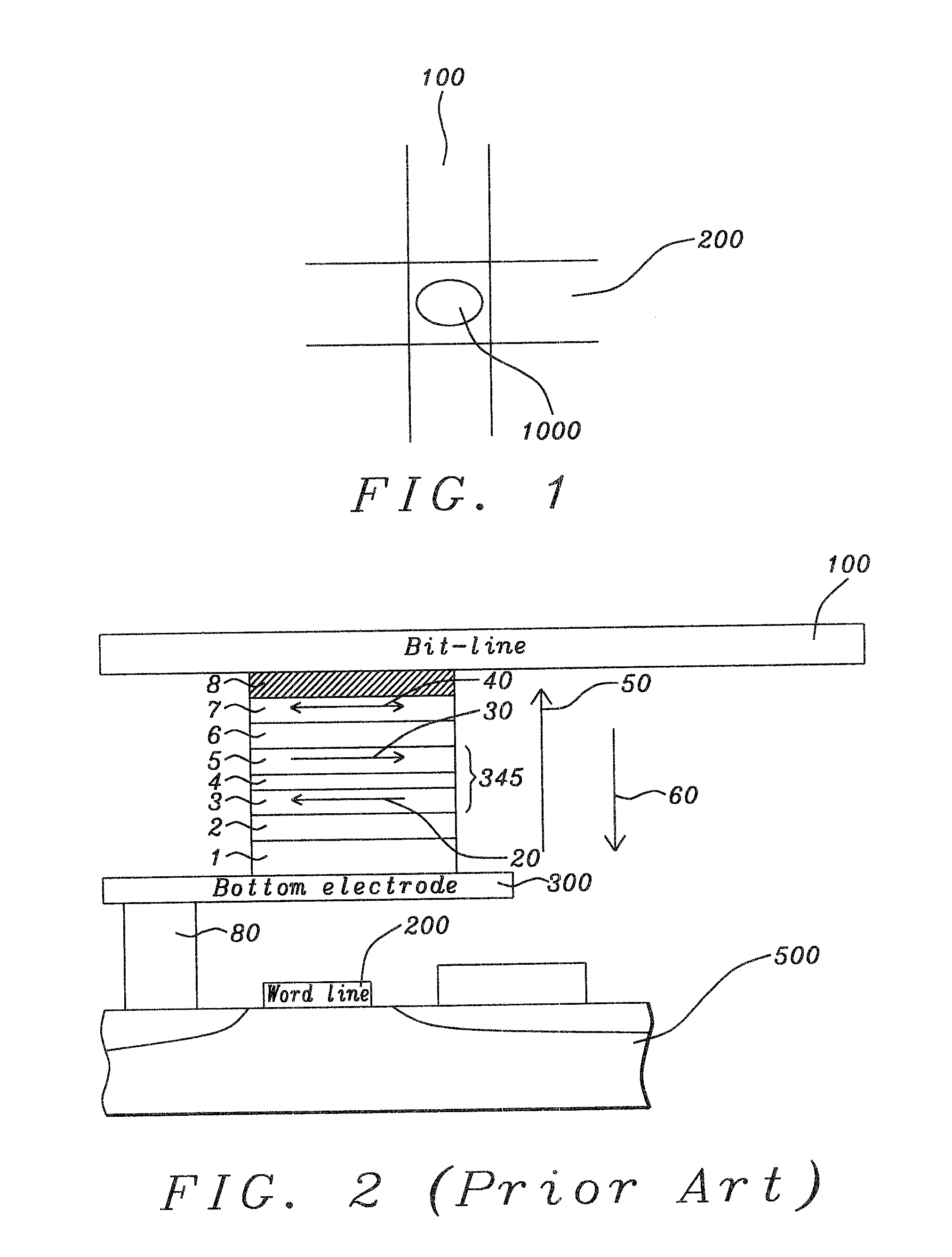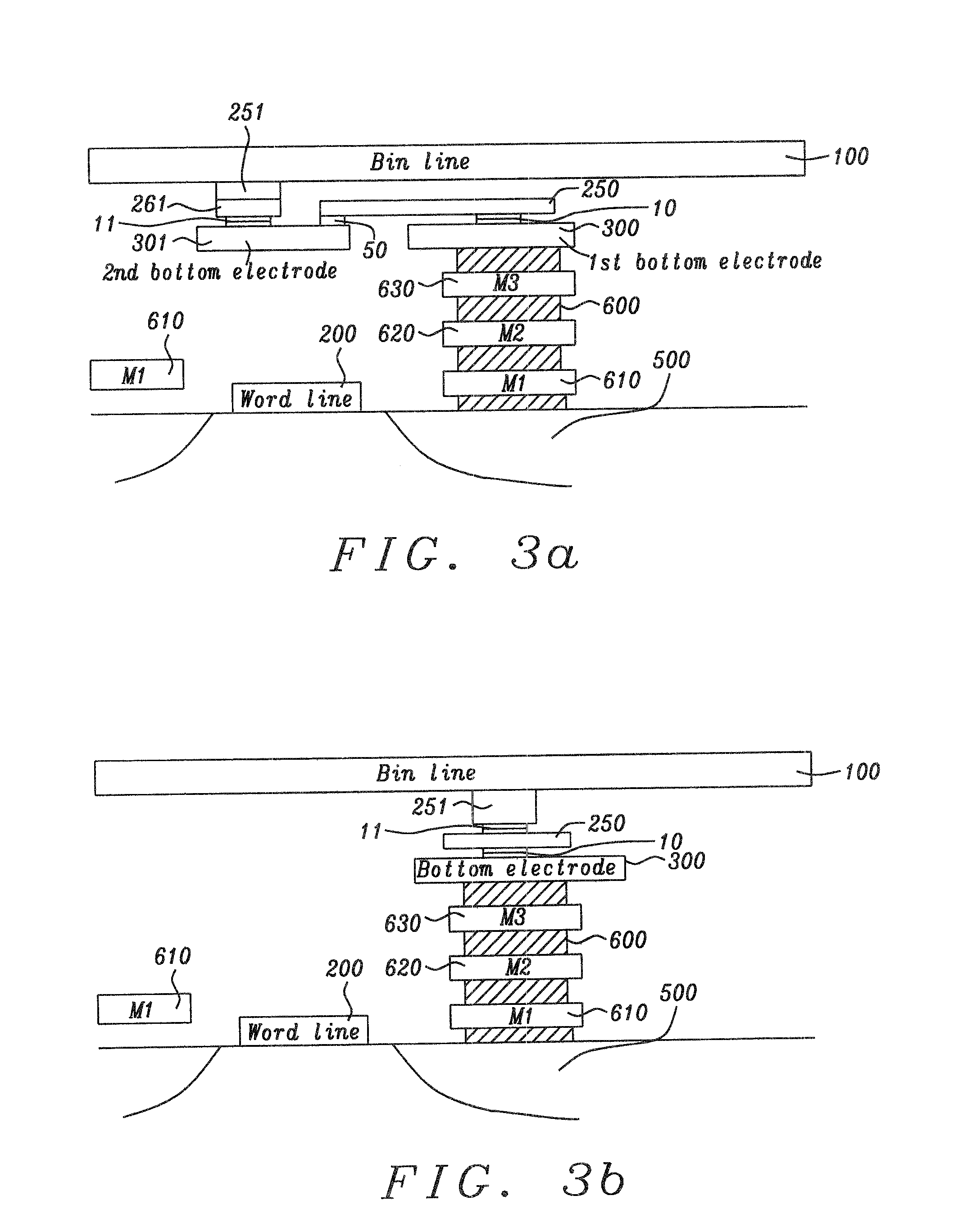Spin Transfer MRAM Device with Reduced Coefficient of MTJ Resistance Variation
a technology of mtj resistance variation and spin transfer mram, which is applied in the direction of information storage, static storage, digital storage, etc., can solve the problems of increasing power consumption, affecting the operation of the device, so as to increase the read margin
- Summary
- Abstract
- Description
- Claims
- Application Information
AI Technical Summary
Benefits of technology
Problems solved by technology
Method used
Image
Examples
first embodiment
[0030]Referring to FIG. 3a, there is shown this invention. In this embodiment a plurality of N sub-cells, where N is an integer greater than 1 (only two (10), (11) being shown for simplicity) are formed in a horizontal series connected sequence. Looking downward from the top of the diagram, there is shown a horizontally extending bit line (100). At the bottom of the diagram is shown (highly schematically) a current providing transistor (500). A word line (200) that extends perpendicularly to the plane of the figure and, correspondingly, transverse to the bit line, substantially contacts the gate of the transistor. A conducting via (600) is shown extending upward through three exemplary layers (610), (620), (630) of metallization (levels of the circuit integration along which electrical connections are made) to ultimately contact the bottom electrode (300) of a first MTJ sub-cell (10). The first sub-cell has a top electrode (250) which extends horizontally to electrically contact the...
second embodiment
[0032]Referring now to FIG. 4a, there is shown, schematically, a typical fabrication process of this second embodiment, in which the sub-cells are series connected in a vertical configuration. In this process there is first formed on a substrate (1000) a first bottom electrode (300) on which is formed a first MTJ element film stack (10) that will subsequently be patterned to become the first sub-cell. The substrate may already contain a conducting via (600) that connects to a transistor in a lower layer of the fabrication. This via will not be shown in subsequent drawings but its presence is understood. Note, in this terminology the film stack refers to the succession of vertically stacked layers that, when horizontally patterned, will become an MTJ sub-cell. The vertical structure of the stack is the same as the vertical structure of the MTJ cell shown in FIG. 2, so, for clarity, the stack will be shown as a layer (10) without structure.
[0033]The horizontal extent of the film stack...
PUM
 Login to View More
Login to View More Abstract
Description
Claims
Application Information
 Login to View More
Login to View More - R&D
- Intellectual Property
- Life Sciences
- Materials
- Tech Scout
- Unparalleled Data Quality
- Higher Quality Content
- 60% Fewer Hallucinations
Browse by: Latest US Patents, China's latest patents, Technical Efficacy Thesaurus, Application Domain, Technology Topic, Popular Technical Reports.
© 2025 PatSnap. All rights reserved.Legal|Privacy policy|Modern Slavery Act Transparency Statement|Sitemap|About US| Contact US: help@patsnap.com



